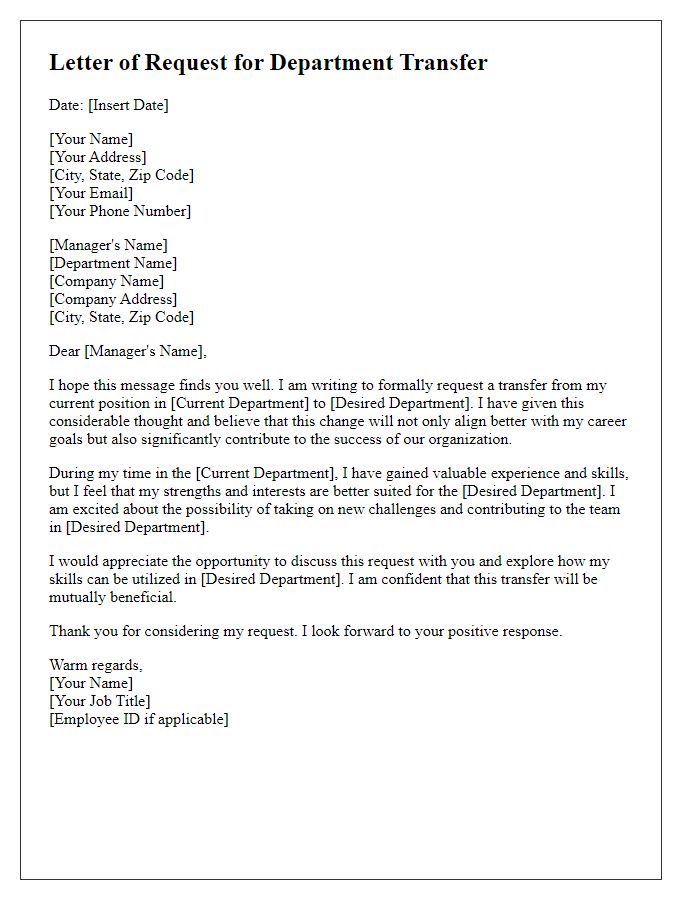Are you considering a job transfer but unsure how to craft the perfect request? Writing a compelling letter can make all the difference in securing a smoother transition within your company. We'll guide you through the essential elements to include, ensuring your message is clear and professional. Ready to dive deeper into the art of job transfer requests? Keep reading!

Clear Subject Line
A job transfer request is a formal appeal made by an employee seeking to relocate to a different position, department, or branch within the organization. Employees may request a transfer for various reasons, such as career advancement, personal circumstances, or organizational changes. Essential components include the subject line, clearly indicating the purpose of the email, along with the recipient's department or manager's name for clarity. The body of the request typically details the desired position, justification for the transfer based on skills, experience, and alignment with company goals, as well as the employee's current role accomplishments that would support the transfer. A polite closing expressing gratitude and willingness to discuss further may enhance the request.
Professional Greeting
A job transfer request often includes essential details such as the current position, desired location, and reasons for the request. A professional greeting sets a respectful tone for the communication. For example: "Dear [Manager's Name]," or "To [Department Head's Name]," initiating the conversation with a clear address to the recipient. The context of the request relates to career growth aspirations or personal circumstances, such as relocation for family reasons. Clear articulation of the new position's relevance to career development enhances understanding. Providing a timeline for the transfer demonstrates planning and consideration.
Personal Details and Current Position
A job transfer request requires clarity regarding personal details and current position within the organization. Personal details typically include full name, current address, and employee identification number. Current position should specify job title, department, and start date within the company. Additionally, it is essential to mention supervisor's name and contact information along with any pertinent performance metrics or accomplishments that underscore the request for transfer. This context helps to demonstrate the employee's qualifications and reasons for the desired change in location or role, enhancing the transfer appeal.
Reason for Transfer Request
A job transfer request often stems from various reasons, including personal development, family relocation, or workplace environment changes. Employees may seek opportunities in different branches of large companies, such as corporate giants like Google or Amazon, to pursue career advancement or to better align with their skills and interests. A transfer might also be prompted by a need for a better work-life balance, which can vary significantly between locations such as urban offices compared to remote positions in rural areas. Additionally, changes in personal circumstances, such as a spouse's job transfer to another city, can necessitate a request for relocation within the same organization, ensuring job security while adapting to new life situations.
Closing Remarks and Contact Information
In conclusion, a job transfer request serves as a pivotal communication tool within an organization, allowing employees to express their desire for a change in their work environment or role. Clear articulation regarding the reasons for the transfer, such as professional growth opportunities or personal circumstances, enhances the effectiveness of the request. Including specific details, such as current position title (e.g., Marketing Specialist) and desired position (e.g., Regional Manager), can aid in the decision-making process. Providing accurate contact information, including phone number and email address, ensures open lines for further discussion or inquiries regarding the request, fostering a transparent and collaborative approach. Understanding the company's transfer policy, such as eligibility criteria and timeline, can also contribute to a successful transition.













Comments